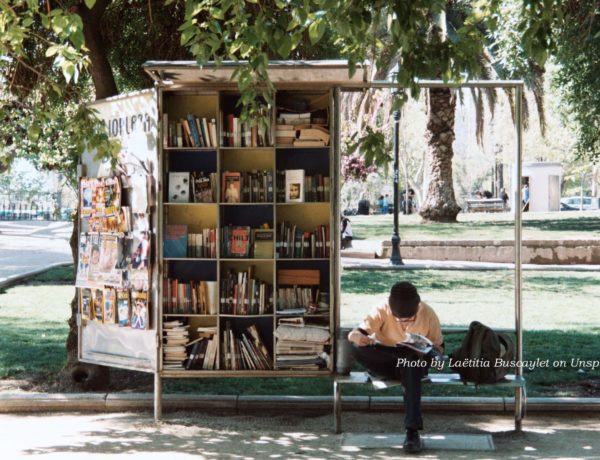Originally published November 11, 2012
Discover Magazine: “Cooperation Instinct” by Kristin Ohlson, December 2012 Issue
While taking a day “off” I became quite interested in an article that my husband brought to me to read. The article was published in the December issue of Discover Magazine and it is about the research of one Martin Nowak. He has, evidently, caused quite a stir in the scientific community. Rather ironic, or perhaps typical. Said “community” can show both extremes of cooperative effort at any moment in time with very interesting results.
Dr. Nowak is a Professor of Biology and of Mathematics at Harvard University and directs the program for Evolutionary Dynamics. In other words, he works through the mathematical interpretation of evolutionary processes. His ideas on how we learned to cooperate have caused quite a kerfuffle amongst evolutionary biologists. It was his contention, however, that the original model of “inclusive fitness” just didn’t work when it was put to the test mathematically. He came up with something quite a bit different by using a page out of game theory called “the prisoner’s dilemma.” Lost you? Okay, let’s go back to the beginning.
One of the issues with pure Darwinism is that “survival of the fittest” does not describe how communities of creatures manage to live together; how they learned to cooperate. How the individual came to the conclusion that risking its life might be to the advantage of the group as a whole. At face value cooperation appears to be counter-intuitive. This includes humans as well as communities involving cooperation between humans and other creatures; even communities of other creatures. Now, I know I have friends that will say something such as, “Oh, Dear. NOT Evolution!” However, if we are to understand human culture (anthropology) we do need to know how our institutions evolved even if you choose not to agree with biological evolution. (We will get to that one day, so stay tuned). So, let’s look at the question of “where did cooperation come from?”
As mentioned, the accepted theory at this point is that cooperation, altruism, and all those tendencies that cause an individual to risk their own life for the public good (or for another individual) arise from the drive to “protect ones relations.” Even if you are not protecting your own ability to procreate, you are contributing to the preservation of your kinsmen. Dr. Nowak threw a big cherry-smoke bomb in the middle of that theory. He didn’t like the math.
It all started when Nowak was at the University of Vienna and happened to meet a gentleman by the name of Karl Sigmund, a mathematician. Dr. Sigmund gave a talk based on the prisoner’s dilemma, a game theory model devised in the 1950s. For fans of the TV series Numb3rs, you may remember an episode based on this mathematical model. The theory is based on the responses of various “players” given the risk/benefit ratio for each participant. It goes something like this: You and another individual have been arrested on suspicion of being involved in a crime. You are each being held separately and have no contact. The police offer a “deal” to each of you.
“If you confess and incriminate your accomplice while he or she remains silent, you will be convicted of a lesser crime, serving just one year in prison while your accomplice serves four. In the parlance of the game, you have “defected” from your friendship. If you and your accomplice both refuse the deal and stay true to each other – remaining “cooperators” in the game’s lingo – you will both be convicted of a lesser crime and serve two-year sentences, since the police do not have enough evidence to convict either one of you of the more serious crime. If you both testify against each other – that is, if you mutually defect – then the police will convict both of you for the serious crime but give you only three years, since you provided some evidence.” (from the article, age 37)
So, if one or both “defect“ the sentence is less. If you happen to be the one that didn’t defect, then you get the full brunt of the consequences. Nowak and Sigmund developed a program to test iterative occasions of the prisoner’s dilemma. Who would survive and what would be the social trends? The model also provides many, many variations that can be mathematically assessed.
During some two decades of crunching numbers and testing results, it was discovered that there is a progression from one outcome to another. At one point, when Nowak returned to the lab in Vienna, he discovered the math had arrived at a new modification (or winning strategy for survival), the advent of something he called, “generous tit for tat.” This was the development of “forgiveness.” This version indicated that we never forget a good turn, but we do occasionally forgive a bad one.
As a consequence of his research (and that of his colleagues) Dr. Nowak has developed many variations to test his theories and has arrived at five basic mechanisms that characterize cooperation.
- Tit for Tat, direct reciprocity. We are all familiar with this one! I’ll scratch your back if you scratch mine. In Facebook jargon this would be “I’ll like you if you like me.”
- Indirect reciprocity or reputation. When I was growing up there were all sorts of sayings about protecting your reputation and that once broken it was very hard to fix. Well, the math bears this out. People who do not have experience with a particular individual will grant cooperation to those who have a reputation for cooperating. Without that reputation support is far less likely to occur.
- Spatial selection. This means that we tend to support those who are closest to us physically, a type of cooperation and interaction that comes from proximity. Social networks aid in survival which nurtures and expands cooperation. Think, barn raising. With the advent of the internet the definition of “close proximity” is changing dramatically.
- Multilevel selection. This expands the cooperation into large groups such as cities, countries, organizations. Such larger communities cannot survive without a reasonable amount of cooperation.
- Kin Selection, something similar to where evolutionary biology started and seems determined to defend. We cooperate with blood relatives to protect our “family” progeny. Dr. Kowak has discovered this develops within the scope of a broader social base and not under the guidelines of strict kinship.
Nowak himself is not really clear about why there was such a “foaming at the mouth” reaction to his paper (first published in Nature). Some mention is made in the article that the field may be super-sensitive to showing any chips in the armor of evolutionary science in the face of opposition by creationists and intelligent design adherents. I find that rather sad since the premise of science is to seek, test, try, break and rebuild and see what comes out. It is, in many ways, a cooperative effort.
In addition to finding out what makes humans tick, Dr. Nowak’s theories have been used to test the risk/benefit ratio in non-human scenarios. When the model was applied to the treatment of HIV, the indications were that the virus propagated so rapidly that the best way to treat it was with a multiple drugs, all at once. This, of course, is what we have found to be successful and why we use a “cocktail” to treat people suffering from AIDS. There is much more in the article and I highly recommend trying to locate a copy.
Cooperation, as we know, is not just a human trait. We find it all over nature. Orcas and dolphins organize their hunts and cooperate to gain the greatest take. Male Emperor Penguins keep each other warm during Antarctic winters. Pack animals organize to hunt larger game and some of those targets will organize to protect the young; as a herd and not just as parents. Various insects organize to feed the whole community. All across nature we see ways and means of protecting the whole even when it may endanger the individual. I have, in fact, observed domestic cats cooperating to catch a rodent hiding under a shed when there was only enough rodent to feed one cat.
As it happens, I find this whole subject rather timely. We in America are suffering from a major crisis in “cooperative effort.” Cooperation is not something that will turn us all into socialists; it is a matter of survival. After millennium of development, the world has consistently learned that cooperation can lead to more than mere survival; it can help us accomplish fantastic goals. It conquered uncharted territories from the land across the river to the moon and beyond. It created technology that provided advances in medicine, engineering, science, social justice and social responsibility. It helped the human race improve shelter, clothing, food, general welfare and access to knowledge. One does not have to agree in all points to cooperate. In fact, many times through cooperation we find a solution better than either original idea. “Divided we fall” is not a cliché; it is a fundamental fact of life on earth and a critical piece of basic survival. So, which prisoner are you?
Love to hear from you folks! I get ideas from friends on Facebook, comments, random readings and pointed glares. Let me know what you would like to hear about and I’ll see what I can dig up!



No Comments